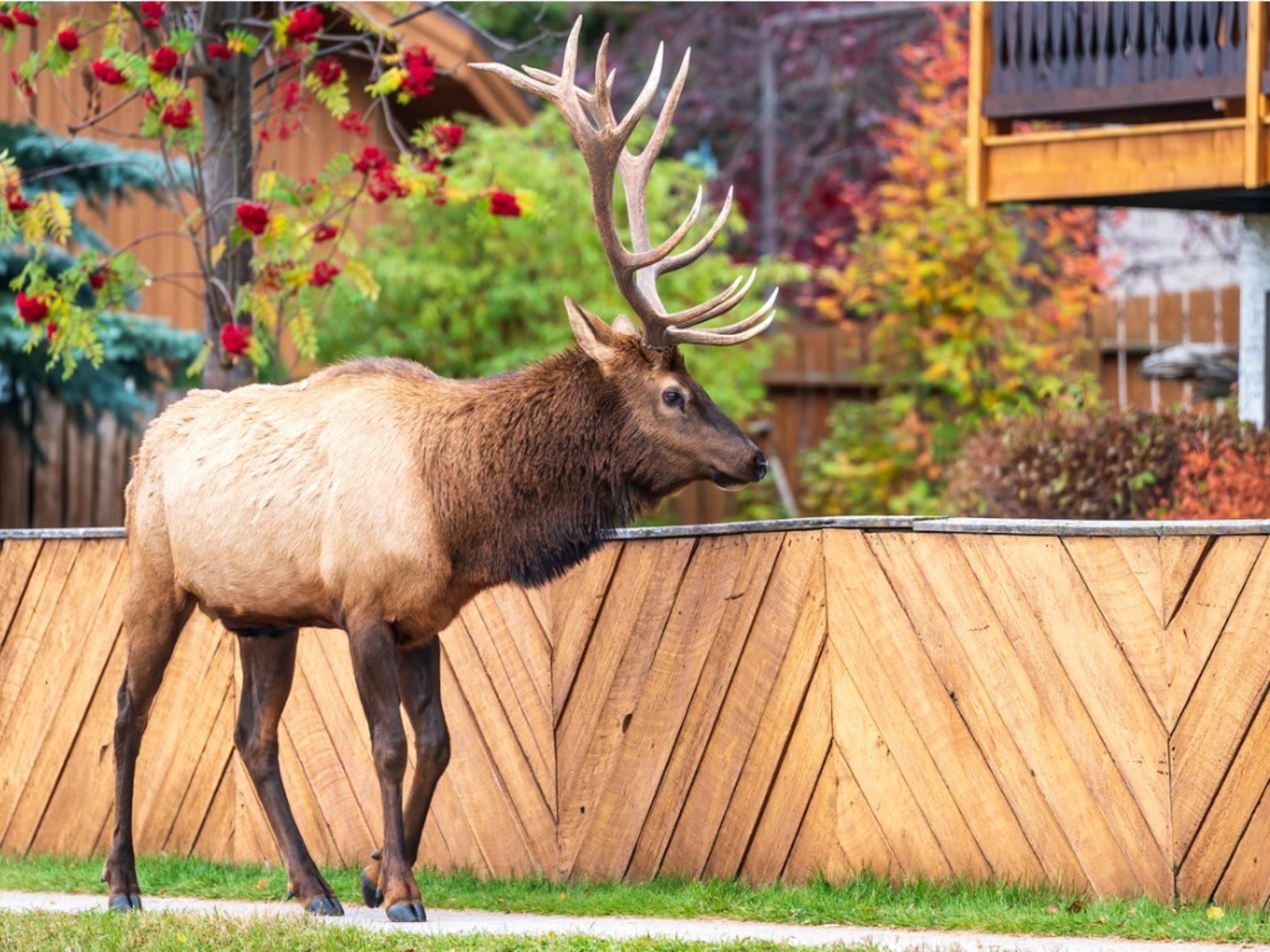Eliminating Elk Damage - How To Keep Elk Out Of Your Garden

One of the great benefits to living in a more rural area is watching wildlife. As charming as deer and elk might be, plant damage from elk is no joke. Yes, an elk needs to eat, but most gardeners would prefer it not to occur within their landscape. So, the question becomes how to keep elk from eating plants, and out of your yard. An elk fence and deer and elk resistant plants are the place to start.
Elk Fence Height
The most foolproof way to prevent plant damage from elk is to build a fence tall enough to keep them out. How tall should an elk fence be? Elk fence height should be at least 8 feet (2 m) or even taller to keep elk out of your yard. If you are in an area of high snowfall, keep in mind that elk and deer can use packed down snow as an incline to help them hop over a fence. Taller is better.
Hungry deer and elk are capable of knocking down a fence, so be sure your fence is sturdy. A guard dog or even a radio playing can also deter both deer and elk.
How to Keep Elk from Eating Plants
Certainly a tall fence is how to keep elk out of your yard, but it isn’t the only deterrent. An added deterrent is to use netting to cover berries and other low growing plants that elk like. You can also use elk repellent.
Frequent applications of a mix of 20/80% mix of egg and water, or hot sauce and water are said to keep elk from eating plants. There are also commercial solutions but, as with other home remedies, animals may become accustomed to the solution. The best bet is to rotate and vary the types of repellent used.
How to Keep Elk Out of Your Yard
If you can’t manage the idea of fencing, try adding either deer and elk resistant plants or those that will recover quickly from browsing. A good idea is to mix native species with ornamental plants to allow the overall landscape to blend in with the rural environment.
Native plants like chokecherry, hawthorn, sumac, and serviceberry are plants that over time have evolved and adapted to browsing. For trees, try growing some species of maple, ash, blue spruce, holly and narrow leaf cottonwood.
Gardening tips, videos, info and more delivered right to your inbox!
Sign up for the Gardening Know How newsletter today and receive a free copy of our e-book "How to Grow Delicious Tomatoes".
No plant is completely deer or elk proof, especially during drought, but some are less desirable. Plants with different textures, scents or even toxicity are less palatable. Planting these types of plants is called camouflage gardening. Examples of camouflage gardening include thyme, lavender, artemesia, bee balm catmint, verbena and hyssop.
Thyme can be especially helpful. Wooly or creeping thyme planted as ground cover confuses the animal’s sense of smell. Fuzzy lamb’s ear tickles their mouths and irritates their stomachs.
Toxic plants you might consider adding include barberry, cotoneaster, digitalis, annual alyssum and dead nettle.
Be advised that even if you use fencing, repellent, and incorporate deer and elk resistant plants, a hungry and/or thirsty animal is going to do its utmost to take care of those needs. A combination of all three is the best way to minimize damage from elk.

Amy Grant has been gardening for 30 years and writing for 15. A professional chef and caterer, Amy's area of expertise is culinary gardening.
-
 Looking For Plants To Give You The Soft And Fuzzies? Try These 5 Fuzzy Leaf Plant Options
Looking For Plants To Give You The Soft And Fuzzies? Try These 5 Fuzzy Leaf Plant OptionsLovers of texture, drama, silver foliage and tactile plants will adore these special sensory garden additions. These fuzzy leaf plant options will leave you all aglow
By Susan Albert
-
 Get Ready For A Summer Of Hummers! Grow These Full Sun Hummingbird Plants and Flowers
Get Ready For A Summer Of Hummers! Grow These Full Sun Hummingbird Plants and FlowersIf you’re lucky enough to enjoy a sunny backyard, make sure you are maxing out on your pollinator opportunities and grow these full sun hummingbird plants and flowers
By Tonya Barnett